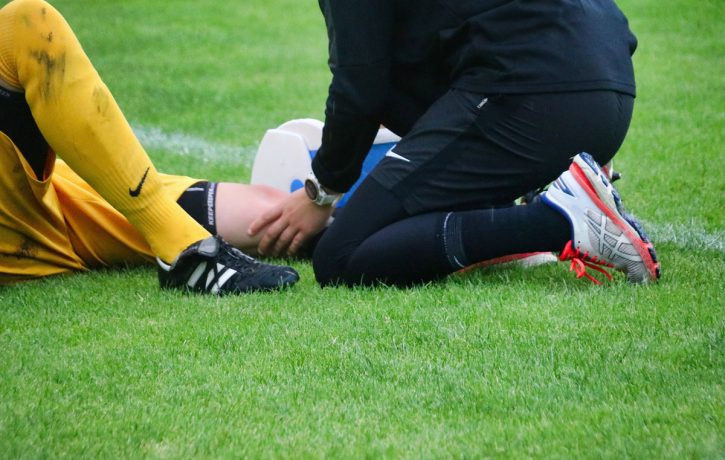What Should I Do If I Suffer From a Hamstring Injury?

The hamstrings are a group of three muscles that run down the back of the thigh, from the sitting bones, down to below the knee joint. They not only flex the knee and extend the hip but are also involved in stabilizing the torso and pelvis when standing and moving the trunk.
Hamstring injuries tend to occur more commonly in fast sports where there are lots of changes in direction movements and lunging. For example, hamstring injuries are the most common non-contact injury in football. Each season, on average 12 % of premier league players will suffer a hamstring strain which can be a simple grade 1 tear, up to a grade three/full rupture which may require surgery.
Grade 1 or 2 strains, where non-surgical management is appropriate, can take from 3 to 6 weeks to heal. The scar tissue after the suitable healing time needs some maturing and is still susceptible to re-injury for a period of time. On average, up to 30% of these players can reinjure the same muscle within 16 weeks of the original injury, and that is with daily access to the best strength and conditioning coaches, and regular soft tissue treatments and muscle massage.
The maturing of scar tissue after an injury has healed is known as remodeling. In essence, the collagen, or scar tissue, of the healed injury needs time to build resilience to the type of pressures and resistance that the individual regularly participates in. This does take time and the remodeling phase of tissue recovery after an injury can be around 18 months.
This is nothing to be concerned about as it is completely normal but does emphasise that when sustaining a muscle injury (and we need to take the same approach to other injuries as well such as ligaments, cartilage, and boney injuries) is that the scar needs to be stressed in order to remodel. Complete rest is no longer the way to manage any sports injury since our understanding of the way our bodies heal has improved over the last 15 to 20 years.
Tissue stress, through contraction and stretch, is vital to building the resilience of the scar and fully maturing it. This happens through natural movements and like anything physical that we do regularly, our tissue will become accustomed and conditioned to it. It’s the same after an injury.
Complete rest, as might have been recommended in the past, is inappropriate in most cases as our understanding improves, and we now understand that rest increases the overall recovery time. Our bodies heal quicker when we stress our tissues with activity. However, the balance has to be that we do not overload and reinjure like with 30% of the footballers.
Pain is therefore the nervous system’s natural way to limit the amount of stress on our bodies. Pain slows us down and we are more cautious, yes; but we do not need to avoid things that hurt. Pain does not mean damage and doing things that hurt is not more damaging. There is a limit to how much pain to suffer, but that is down to what we can individually cope with. Certainly, anything from 3 to 5 out of 10 on the pain scale is perfectly safe as it would be excruciating before we did further damage to the injury.
Our tissues respond positively to stress, getting stronger, and respond negatively to inactivity becoming weaker and less resilient. Overall, it is important to understand injury and how to best manage things. We all approach pain differently with different mindsets and tolerability.
Understanding that avoidance of pain can significantly impede recovery and lead to more negative feelings about our bodies and health is so important in maintaining physical health. But also knowing when to back off at times when our bodies need it is also easily ignored by many and may contribute to physical soreness.
If you have suffered a hamstring injury or are just suffering from a persistent pain that doesn’t seem to be healing, then please do get in touch with the team at The Body Matters and we can find the right person to help you.
This article was written by Matthew Oliver M.Ost DO ND. Osteopath.
- How Pushing Too Hard Can Affect Your Health - 23rd April 2025
- Finding Hope and Comfort Through Pain - 21st March 2025
- Non-Pharmacological Solutions for Managing Pain in Parkinson’s - 19th February 2025
